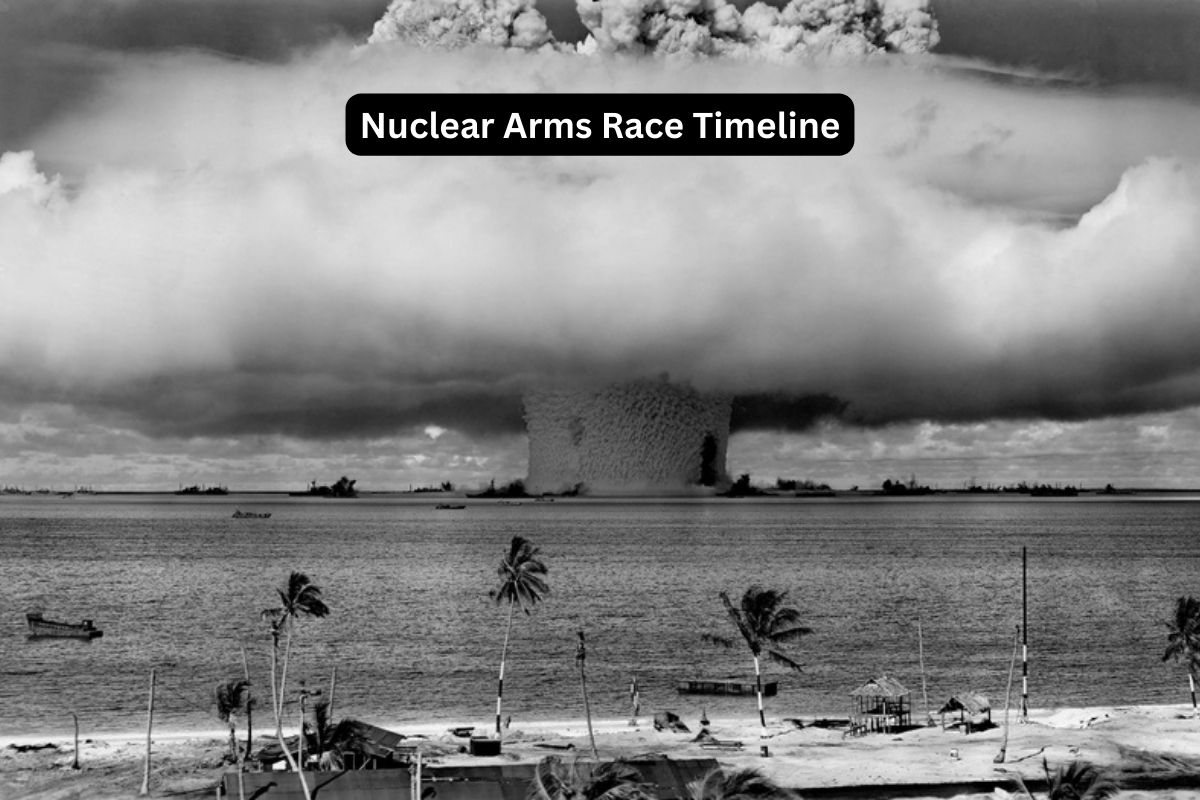The nuclear arms race stands as one of the most pivotal chapters in modern history, shaped by the intense rivalry between superpowers, technological advancements, and the ever-present specter of global conflict.
From the dawn of the atomic age in 1945 to the complex geopolitical landscape of the present day, the trajectory of nuclear proliferation has profoundly influenced international relations, security policies, and the collective consciousness of humanity.
This article provides a concise yet comprehensive overview of key events and developments spanning the nuclear arms race, tracing its origins, milestones, and ongoing implications for global security.
By delving into the historical context and evolution of nuclear weaponry, we aim to shed light on the complexities of nuclear deterrence, disarmament efforts, and the urgent imperative to prevent the catastrophic consequences of nuclear warfare.
| Year | Event |
|---|---|
| 1945 | – July 16: The United States successfully detonates the world’s first atomic bomb, “Trinity,” in Alamogordo, New Mexico. – August 6 and 9: The U.S. drops atomic bombs on the Japanese cities of Hiroshima and Nagasaki, leading to Japan’s surrender and the end of World War II. |
| 1946-1949 | – July 1946: The United States conducts the first underwater nuclear test, codenamed “Baker,” at Bikini Atoll. – August 1949: The Soviet Union detonates its first atomic bomb, ending the U.S. monopoly on nuclear weapons. |
| 1950s | – 1952: The United States successfully tests the first hydrogen bomb, codenamed “Ivy Mike,” on the island of Elugelab in the Pacific. – 1953: The Soviet Union detonates its first hydrogen bomb. – 1957: The Soviet Union launches Sputnik, the world’s first artificial satellite, sparking the space race. – 1958: The United States establishes the National Aeronautics and Space Administration (NASA). |
| 1960s | – 1962: The Cuban Missile Crisis occurs, bringing the world to the brink of nuclear war. The crisis is resolved through negotiations between U.S. President John F. Kennedy and Soviet Premier Nikita Khrushchev. – 1963: The United States and the Soviet Union sign the Limited Test Ban Treaty, prohibiting nuclear tests in the atmosphere, underwater, and in outer space. – 1968: The Treaty on the Non-Proliferation of Nuclear Weapons (NPT) is opened for signature, aiming to prevent the spread of nuclear weapons and promote disarmament. |
| 1970s | – 1972: The United States and the Soviet Union sign the Strategic Arms Limitation Talks (SALT) agreements, which impose limits on the number of strategic nuclear weapons each side can possess. – 1979: The Soviet Union invades Afghanistan, leading to increased tensions with the United States and renewed arms race concerns. |
| 1980s | – 1983: President Ronald Reagan announces the Strategic Defense Initiative (SDI), a missile defense system designed to protect the United States from nuclear attacks. – 1987: The United States and the Soviet Union sign the Intermediate-Range Nuclear Forces (INF) Treaty, eliminating an entire class of nuclear weapons. – 1989: The Berlin Wall falls, marking the beginning of the end of the Cold War. |
| 1990s | – 1991: The Soviet Union collapses, leading to the end of the Cold War. The United States and Russia (the successor state to the Soviet Union) begin nuclear disarmament efforts. |
| 2000s-present | – Nuclear disarmament efforts continue, though progress is slow. The United States and Russia maintain large nuclear arsenals, while other countries such as China, India, Pakistan, and North Korea also possess nuclear weapons. – International efforts continue to prevent nuclear proliferation and promote disarmament through treaties and agreements such as the New START treaty. |
Timeline of the Nuclear Arms Race
1945, July 16: The United States successfully detonates the world’s first atomic bomb
The United States successfully detonates the world’s first atomic bomb, codenamed “Trinity,” in Alamogordo, New Mexico. This test marked a significant milestone in the development of nuclear weapons and their potential for warfare.
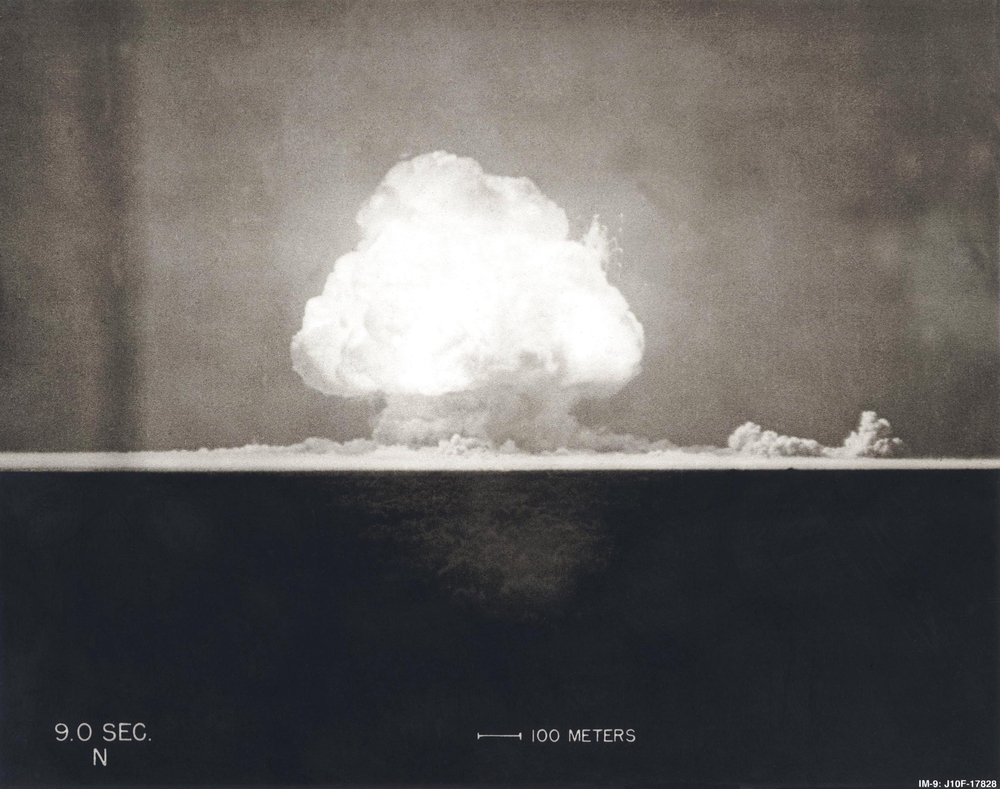
1945, August 6 and 9: The U.S. drops atomic bombs on the Japanese cities of Hiroshima and Nagasaki
The U.S. drops atomic bombs on the Japanese cities of Hiroshima and Nagasaki, respectively. These bombings, which led to catastrophic loss of life and widespread destruction, played a decisive role in Japan’s surrender and the end of World War II.
1946, July: The United States conducts the first underwater nuclear test
The United States conducts the first underwater nuclear test, codenamed “Baker,” at Bikini Atoll. This test, part of Operation Crossroads, aimed to study the effects of nuclear weapons on naval vessels and marine environments.
1949, August: The Soviet Union detonates its first atomic bomb
The Soviet Union detonates its first atomic bomb, ending the U.S. monopoly on nuclear weapons. The successful test, known as “First Lightning,” signaled the start of the nuclear arms race between the United States and the Soviet Union.
1952: The United States successfully tests the first hydrogen bomb
The United States successfully tests the first hydrogen bomb, codenamed “Ivy Mike,” on the island of Elugelab in the Pacific. This test represented a significant advancement in nuclear technology, as hydrogen bombs are far more powerful than atomic bombs.
1953: The Soviet Union detonates its first hydrogen bomb
The Soviet Union detonates its first hydrogen bomb, officially entering the thermonuclear arms race with the United States. The development of hydrogen bombs by both superpowers marked a dangerous escalation in the destructive power of nuclear weapons.
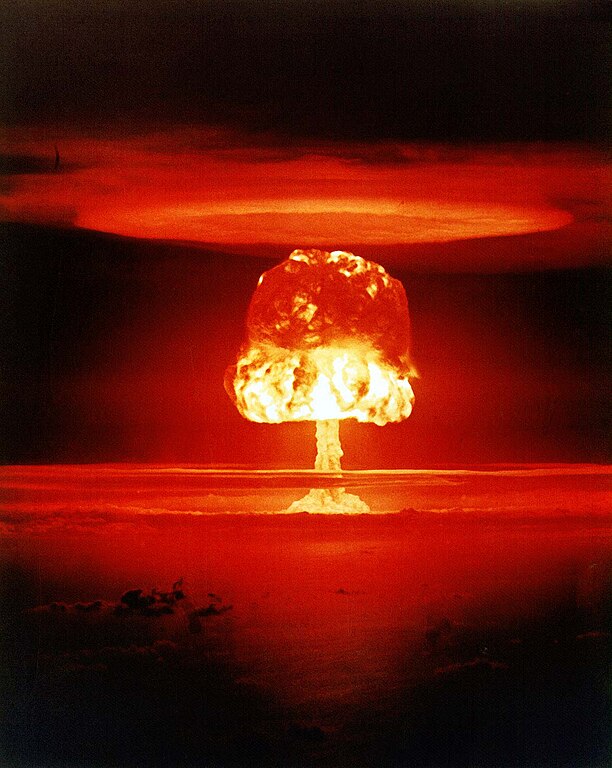
1957: The Soviet Union launches Sputnik, the world’s first artificial satellite
The Soviet Union launches Sputnik, the world’s first artificial satellite, into orbit around the Earth. This event shocked the United States and the rest of the world, sparking the space race and intensifying Cold War competition between the two superpowers
1958: The United States establishes the National Aeronautics and Space Administration (NASA)
The United States establishes the National Aeronautics and Space Administration (NASA) as a response to the Soviet Union’s early lead in space exploration.
Also Read: Berlin Wall Timeline
NASA’s creation signaled America’s commitment to space exploration and technological advancement in the context of Cold War competition.
1962: The Cuban Missile Crisis occurs, bringing the world to the brink of nuclear war
The Cuban Missile Crisis occurs, bringing the world to the brink of nuclear war. The crisis was triggered by the discovery of Soviet ballistic missiles deployed in Cuba, capable of striking the United States.
Also Read: Chernobyl Disaster Facts
The crisis is resolved through negotiations between U.S. President John F. Kennedy and Soviet Premier Nikita Khrushchev.
Tensions escalated rapidly, but ultimately, a negotiated settlement was reached, with the Soviet Union agreeing to remove the missiles in exchange for the U.S. pledging not to invade Cuba and secretly agreeing to remove its own missiles from Turkey.
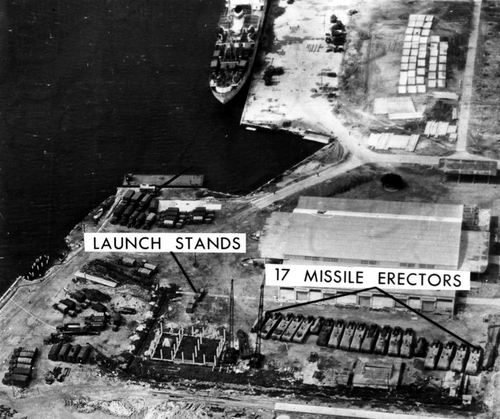
1963: The United States and the Soviet Union sign the Limited Test Ban Treaty
The United States and the Soviet Union sign the Limited Test Ban Treaty, prohibiting nuclear tests in the atmosphere, underwater, and in outer space.
The treaty was a response to growing concerns about the environmental and health risks posed by nuclear testing. It marked an important step toward nuclear arms control and détente between the two superpowers.
1968: The Treaty on the Non-Proliferation of Nuclear Weapons (NPT) is opened for signature
The Treaty on the Non-Proliferation of Nuclear Weapons (NPT) is opened for signature, aiming to prevent the spread of nuclear weapons and promote disarmament. The NPT established a framework for international cooperation on nuclear non-proliferation, disarmament, and the peaceful use of nuclear energy.
It divided signatories into nuclear-weapon states (NWS) and non-nuclear-weapon states (NNWS), with the NWS committing to disarmament negotiations while the NNWS pledged not to acquire nuclear weapons.
1972: The United States and the Soviet Union sign the Strategic Arms Limitation Talks (SALT) agreements
The United States and the Soviet Union sign the Strategic Arms Limitation Talks (SALT) agreements, which impose limits on the number of strategic nuclear weapons each side can possess.
SALT I resulted in two key treaties: the Anti-Ballistic Missile (ABM) Treaty and the Interim Agreement on the Limitation of Strategic Offensive Arms. These agreements marked the first attempt by the superpowers to cap their nuclear arsenals and reduce the risk of nuclear war.
1979: The Soviet Union invades Afghanistan
The Soviet Union invades Afghanistan, leading to increased tensions with the United States and renewed arms race concerns. The Soviet intervention in Afghanistan triggered a backlash from the United States and its allies, who saw it as a threat to regional stability and an expansion of Soviet influence. The event further strained U.S.-Soviet relations and fueled fears of a new Cold War confrontation.
1983: President Ronald Reagan announces the Strategic Defense Initiative (SDI)
President Ronald Reagan announces the Strategic Defense Initiative (SDI), a missile defense system designed to protect the United States from nuclear attacks.
Also known as “Star Wars,” SDI proposed the development of space-based missile defense technologies to intercept and destroy incoming ballistic missiles.
While SDI faced technical challenges and criticism from skeptics, its announcement intensified the arms race and raised tensions between the United States and the Soviet Union.
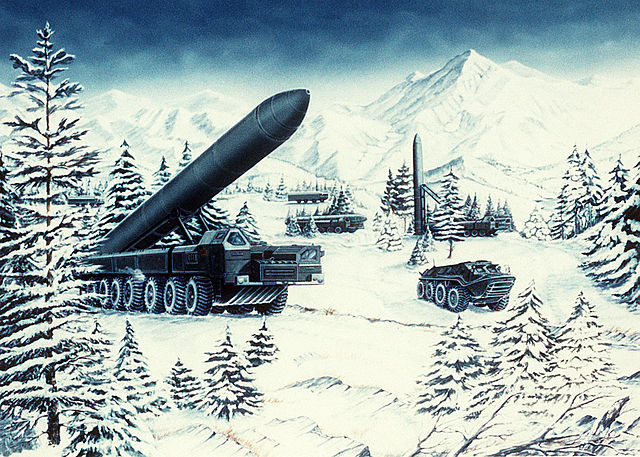
1987: The United States and the Soviet Union sign the Intermediate-Range Nuclear Forces (INF) Treaty
The United States and the Soviet Union sign the Intermediate-Range Nuclear Forces (INF) Treaty, eliminating an entire class of nuclear weapons.
The INF Treaty was a historic agreement that required the destruction of all ground-launched ballistic and cruise missiles with ranges between 500 and 5,500 kilometers.
Its implementation marked a significant step forward in nuclear disarmament and reduced the risk of nuclear conflict in Europe.
1989: The Berlin Wall falls, marking the beginning of the end of the Cold War
The Berlin Wall falls, marking the beginning of the end of the Cold War. The collapse of the Berlin Wall symbolized the reunification of East and West Germany and the erosion of Soviet influence in Eastern Europe.
It signaled a turning point in the Cold War, leading to the eventual dissolution of the Soviet Union and the end of communist rule in Eastern Europe.
1991: The Soviet Union collapses, leading to the end of the Cold War. The United States and Russia (the successor state to the Soviet Union) begin nuclear disarmament efforts
The Soviet Union collapses, leading to the end of the Cold War. Economic stagnation, political unrest, and nationalist movements contributed to the dissolution of the Soviet Union, resulting in the emergence of independent states from its former republics.
The end of the Cold War marked a victory for Western liberal democracy and marked a significant shift in global geopolitics.
The United States and the Soviet Union sign the START Treaty, further reducing their nuclear arsenals. START (Strategic Arms Reduction Treaty) was a landmark arms control agreement that aimed to reduce the number of strategic nuclear weapons deployed by the United States and the Soviet Union.
It represented a continuation of efforts to de-escalate the arms race and promote nuclear disarmament.
1994: North Korea withdraws from the Nuclear Non-Proliferation Treaty (NPT)
North Korea withdraws from the Nuclear Non-Proliferation Treaty (NPT), raising concerns about nuclear proliferation.
North Korea’s withdrawal from the NPT and its pursuit of nuclear weapons capabilities heightened tensions on the Korean Peninsula and posed a significant challenge to regional and international security efforts.
It sparked diplomatic efforts to address North Korea’s nuclear program through negotiations and sanctions.
2002: The United States withdraws from the Anti-Ballistic Missile (ABM) Treaty
The United States withdraws from the Anti-Ballistic Missile (ABM) Treaty, citing the need for missile defense against emerging threats. The withdrawal signaled a shift in U.S. missile defense policy and raised concerns about the future of arms control agreements.
2009: U.S. President Barack Obama announces the Prague Agenda
U.S. President Barack Obama announces the Prague Agenda, outlining steps toward nuclear disarmament and non-proliferation. The agenda included efforts to negotiate the New START Treaty with Russia, secure nuclear materials, strengthen the NPT regime, and pursue a world free of nuclear weapons.
2010: The United States and Russia sign the New START Treaty
The United States and Russia sign the New START Treaty, further reducing their strategic nuclear arsenals. New START (Strategic Arms Reduction Treaty) replaced the original START treaty and committed both countries to limits on deployed strategic nuclear warheads and delivery systems.
2015: Iran agrees to the Joint Comprehensive Plan of Action (JCPOA)
Iran agrees to the Joint Comprehensive Plan of Action (JCPOA), limiting its nuclear program in exchange for sanctions relief. The JCPOA aimed to prevent Iran from developing nuclear weapons by imposing strict limits and verification measures on its nuclear activities.
2017: The United States announces its withdrawal from the JCPOA
The United States announces its withdrawal from the JCPOA, reinstating sanctions on Iran and sparking renewed tensions over its nuclear program.
The U.S. withdrawal from the JCPOA strained relations with Iran and other signatories, raising concerns about the future of nuclear non-proliferation efforts in the region.
2021: The United States and Russia extend the New START Treaty for five years
The United States and Russia extend the New START Treaty for five years, preserving key nuclear arms control measures. The extension of New START was seen as a positive step toward maintaining strategic stability between the two nuclear superpowers.
2023: North Korea conducts a series of missile tests
North Korea conducts a series of missile tests, including intercontinental ballistic missiles (ICBMs), heightening concerns about its nuclear capabilities. The tests underscored the ongoing challenges of nuclear proliferation and regional security in East Asia.
